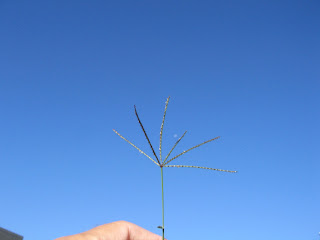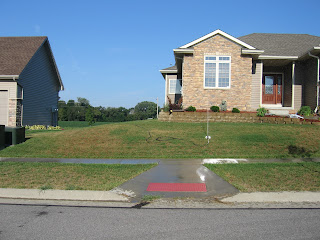Nick Christians
August 27, 2012
We have a special speaker at the turf club meeting this Wednesday, August 29 at 6 pm in room 118 Horticulture. He is Mark Kuhn, who worked at the Wimbledon Tennis Tournament this summer. He will be talking about that experience and about maintaining Iowa's only grass tennis court on his farm near Charles City. Everyone is welcome.
The information below is a press release on the event.
Iowa State University
College of Agriculture and Life Sciences
College of Agriculture and Life Sciences
8/22/12
Contacts:
Nick
Christians, Horticulture, (515) 294-0036, nchris@iastate.edu
Melea
Reicks Licht, Agriculture and Life Sciences Communications Service, (515)
294-8892, mreicks@iastate.edu
Owner of Iowa’s Only Grass Tennis Court to Speak at Iowa State
Aug. 29 about Wimbledon Internship
AMES,
Iowa – Mark Kuhn, a farmer and Iowa State University alum, will share his
recent experience as a Wimbledon intern in a presentation on campus on Aug. 29.
Kuhn,
of Charles City, is the owner and caretaker of Iowa’s only grass tennis court.
He
will present, “My Experience at Wimbledon” at 6 p.m. in room 118 Horticulture
Hall at a meeting of Iowa State University’s Turfgrass Club.
Kuhn
will discuss his recent internship working with the grounds staff at the All
England Lawn Tennis Club. Kuhn spent eight days learning from the grounds staff
prior to this year’s Wimbledon Championships. He will share pictures and
behind-the-scenes stories about how the lawns of Wimbledon are prepared for
championship play.
Kuhn
and his family built Iowa's only grass tennis court in 2003, the All Iowa Lawn
Tennis Club, on a cattle feedlot on their farm after consulting with Iowa State
University horticulture professors Nick Christians and David
Minner.
Kuhn
will discuss how he built and maintains the court, and the role the court
played in his receiving an invitation to intern with the Wimbledon grounds
staff.
Kuhn
grows corn, beans and bentgrass on his family's farm near Charles City. He
graduated from Iowa State University in 1973 with a degree in
history. Kuhn served as a member of the Iowa House of Representatives
from 1998-2010. He is currently a member of the Floyd County Board of
Supervisors.
##
Editor's Note: Photos of Mark Kuhn at Wimbledon and of his grass court near Charles City are available upon request. Contact Melea Reicks Licht at mreicks@iastate.edu, (515) 294-8892.
Editor's Note: Photos of Mark Kuhn at Wimbledon and of his grass court near Charles City are available upon request. Contact Melea Reicks Licht at mreicks@iastate.edu, (515) 294-8892.
On
the Web: This and all other Iowa State University College of Agriculture and
Life Sciences news releases and related photos are available at http://www.ag.iastate.edu/news/.
_______________________________________________
Iowa State University
College of Agriculture and Life Sciences
Communications Service
304 Curtiss Hall
Ames, IA 50011-1050
(515) 294-5616
Web: http://www.ag.iastate.edu
Facebook: http://www.facebook.com/IowaStateU.AgLifeSciences
Twitter: http://twitter.com/iastate_cals
_______________________________________________
Iowa State University
College of Agriculture and Life Sciences
Communications Service
304 Curtiss Hall
Ames, IA 50011-1050
(515) 294-5616
Web: http://www.ag.iastate.edu
Facebook: http://www.facebook.com/IowaStateU.AgLifeSciences
Twitter: http://twitter.com/iastate_cals
Figure 1. Mark at Wimbledon
Figure 2 to 4. Pictures from Mark's tennis court in Iowa.








































